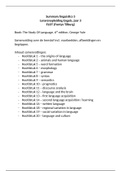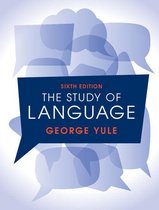Summary
Summary linguistics 3 course at FLOT English
- Course
- Institution
- Book
This is a summary of (almost) the entire book by George Yule, The Study Of Language, which is used for the Linguistics/Linguistics 3 course at the English Teacher Training at the Fontys in Tilburg. The summary is extensive, including terms, images and examples.
[Show more]




